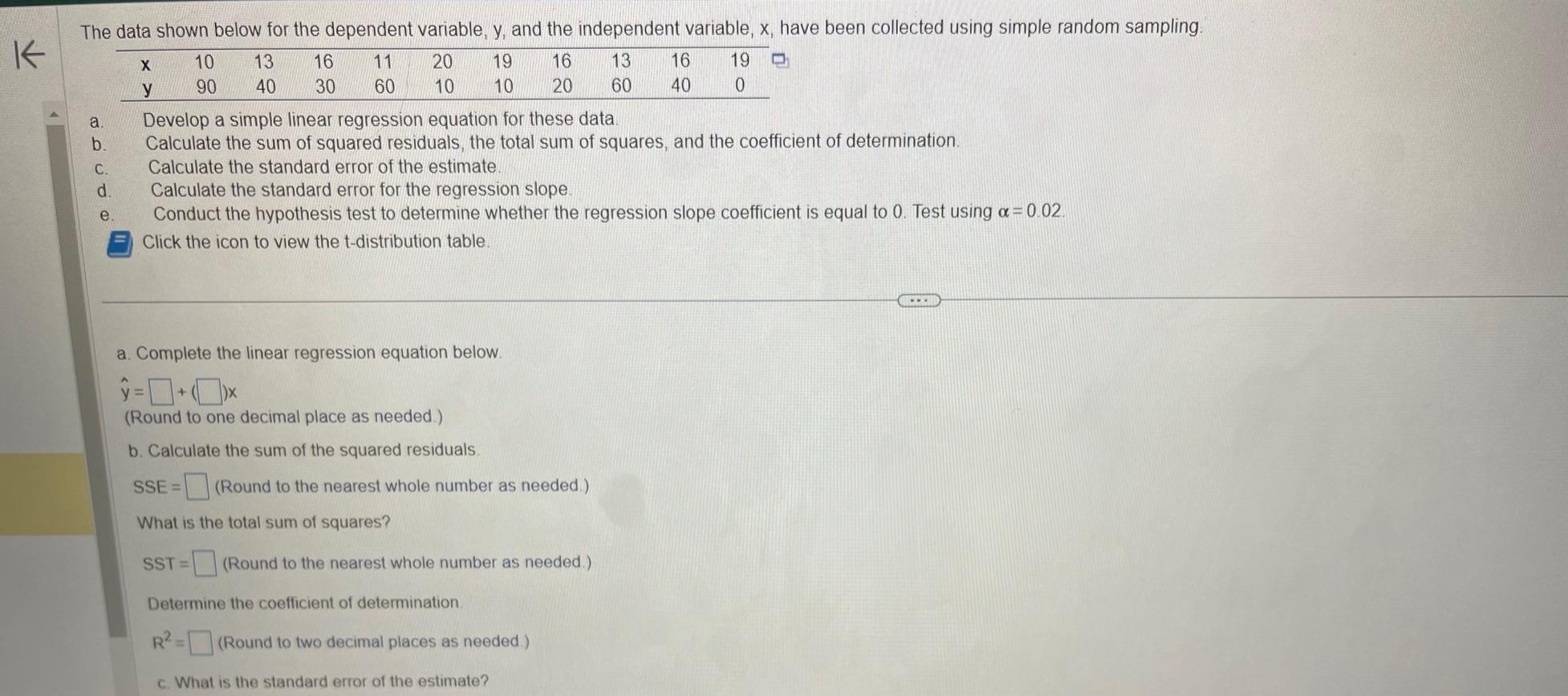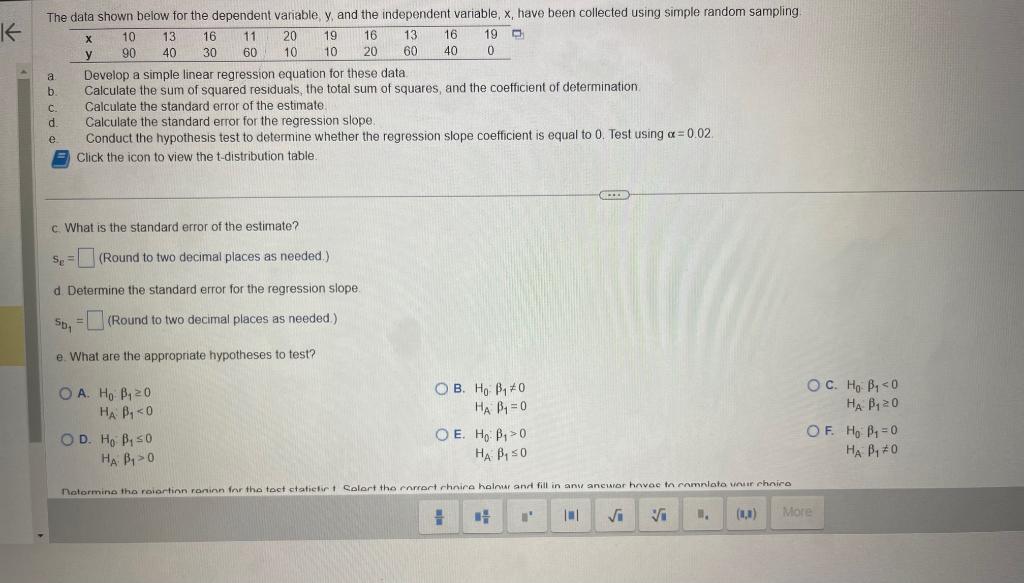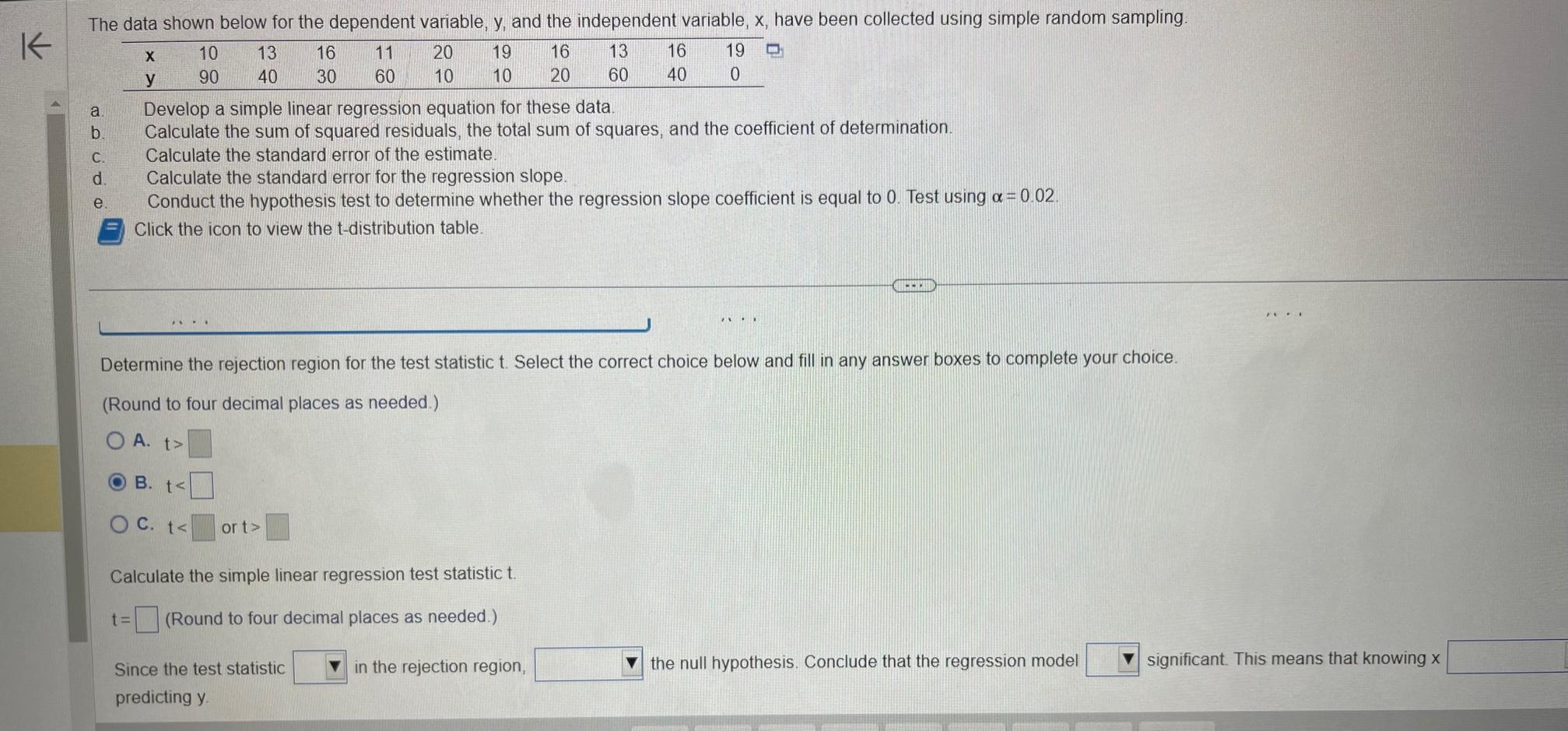Home /
Expert Answers /
Statistics and Probability /
a-develop-a-simple-linear-regression-equation-for-these-data-b-calculate-the-sum-of-squared-res-pa206
(Solved): a. Develop a simple linear regression equation for these data. b. Calculate the sum of squared res ...
a. Develop a simple linear regression equation for these data. b. Calculate the sum of squared residuals, the total sum of squares, and the coefficient of determination. c. Calculate the standard error of the estimate. d. Calculate the standard error for the regression slope. e. Conduct the hypothesis test to determine whether the regression slope coefficient is equal to 0 . Test using \( \alpha=0.02 \). Click the icon to view the t-distribution table. a. Complete the linear regression equation below. \[ \hat{y}= \] (Round to one decimal place as needed.) b. Calculate the sum of the squared residuals. SSE = (Round to the nearest whole number as needed ) What is the total sum of squares? SST = (Round to the nearest whole number as needed.) Determine the coefficient of determination. \( R^{2}= \) (Round to two decimal places as needed.) c. What is the standard error of the estimate?
a Develop a simple linear regression equation for these data. b. Calculate the sum of squared residuals, the total sum of squares, and the coefficient of determination. c. Calculate the standard error of the estimate. d. Calculate the standard error for the regression slope. e. Conduct the hypothesis test to determine whether the regression slope coefficient is equal to 0 . Test using \( \alpha=0.02 \). Click the icon to view the t-distribution table. c. What is the standard error of the estimate? \( s_{e}= \) (Round to two decimal places as needed.) d Determine the standard error for the regression slope. (Round to two decimal places as needed.) e. What are the appropriate hypotheses to test? A. \( H_{0} \cdot \beta_{1} \geq 0 \) B. \( H_{0}-\beta_{1} \neq 0 \) \( \mathrm{H}_{\mathrm{A}} \cdot \beta_{1}<0 \) \( H_{A} \cdot \beta_{1}=0 \) C. \( \mathrm{H}_{0}-\beta_{1}<0 \) D. \( H_{0}-\beta_{1} \leq 0 \) E. \( H_{0}: \beta_{1}>0 \) \( H_{A} \cdot \beta_{1}>0 \) \( H_{A}-\beta_{1} \leq 0 \) F. \( \begin{aligned} H_{0}-\beta_{1} &=0 \\ H_{A}-\beta_{1} & \neq 0 \end{aligned} \)
a. Develop a simple linear regression equation for these data. b. Calculate the sum of squared residuals, the total sum of squares, and the coefficient of determination. c. Calculate the standard error of the estimate. d. Calculate the standard error for the regression slope. e. Conduct the hypothesis test to determine whether the regression slope coefficient is equal to 0 . Test using \( \alpha=0.02 \). Click the icon to view the t-distribution table. Determine the rejection region for the test statistic t. Select the correct choice below and fill in any answer boxes to complete your choice. (Round to four decimal places as needed.) A. \( \mathrm{t}> \) B. \( \mathrm{t}< \) c. \( t< \) or \( t> \) Calculate the simple linear regression test statistic \( t \). \( \mathrm{t}= \) (Round to four decimal places as needed.) Since the test statistic in the rejection region, the null hypothesis. Conclude that the regression model significant. This means that knowing \( x \) predicting \( y \).
Expert Answer
solution: From the given data, n1=n2=10 Excel-->Data-->Data analysis-->regression x Range: Select X column Y range: Select Y column Select labels box


